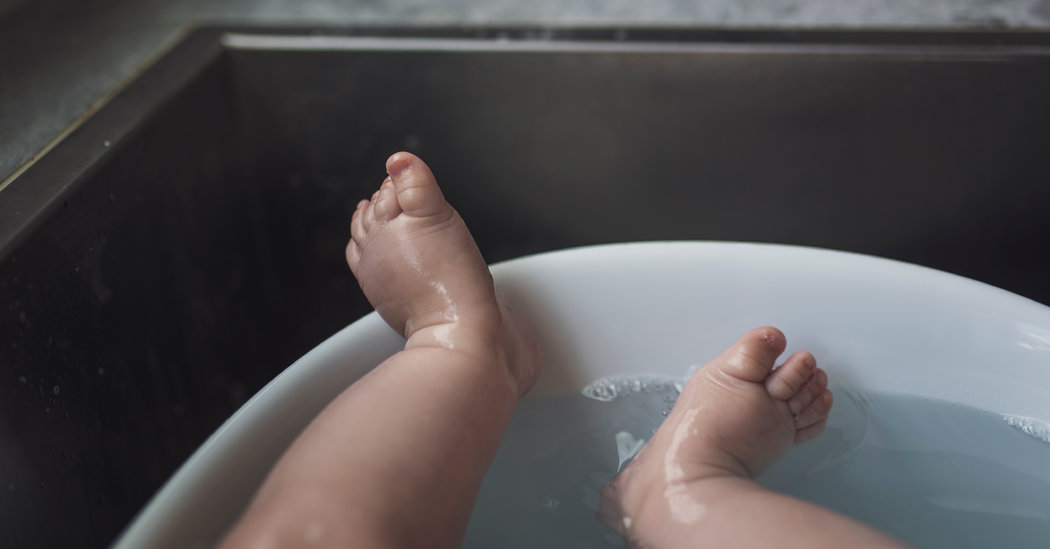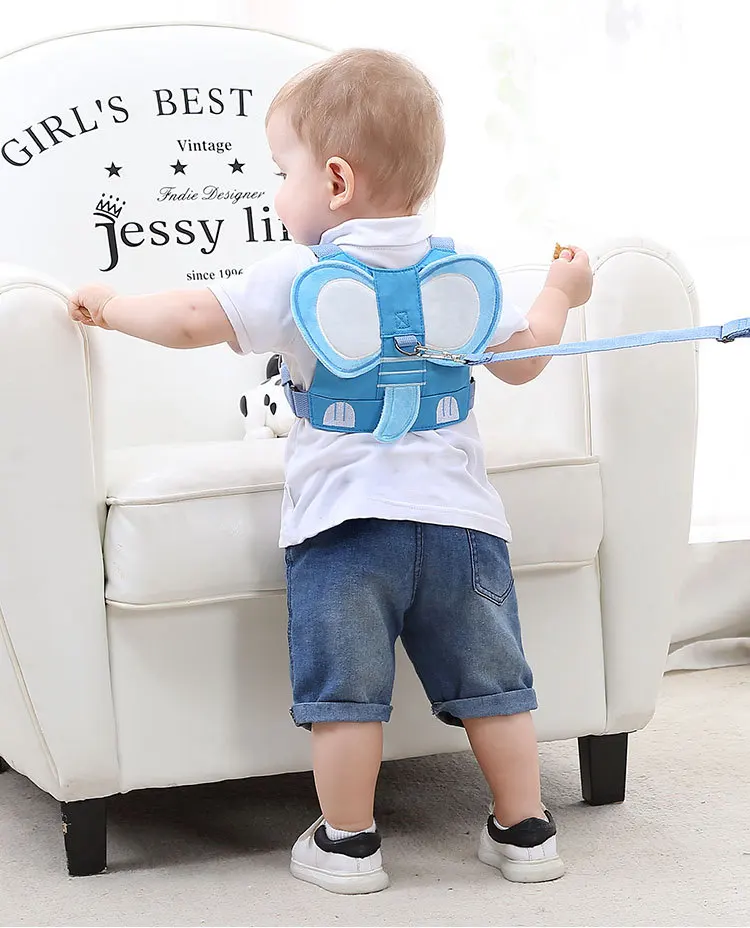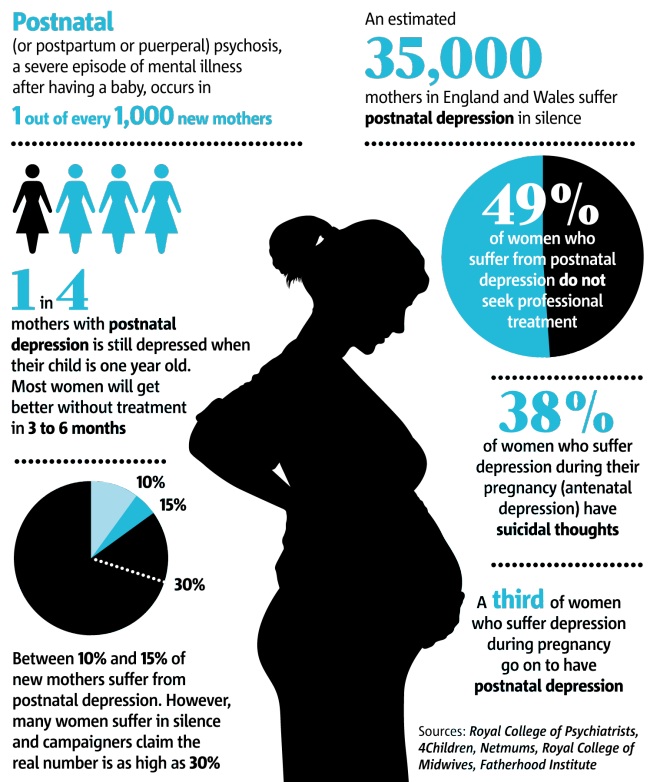How to stop your child self harming
Self-harm & teens: signs, causes, help
About self-harm
Self-harm is when people deliberately hurt themselves as a way of coping with painful or strong emotions. It’s a way of trying to get control over the feelings or relief from them.
For some people, the attempt to control or stop feelings through self-harm is a way of trying to heal themselves. Other people self-harm so they can ‘feel something’ rather than feeling nothingness or emptiness. Some people self-harm to express feelings of hopelessness.
Self-harm is generally a sign that a person is in deep distress.
Self-harm needs to be taken seriously. Don’t ignore it. It can become a habit or a compulsion. Repeated self-harm can lead to serious injuries, scarring, medical conditions and accidental death. And people who self-harm are at increased risk of attempting suicide.
Self-harm: how it happens
Self-harm happens in different ways, some more obvious and serious than others. Teenagers who are self-harming might:
- cut, scratch, carve, brand or mark themselves
- pick at scabs so they don’t heal
- pull their own hair
- burn or graze themselves
- bite, bruise or hit themselves
- hit parts of their bodies on something hard.
Digital self-harm or self-cyberbullying is when teenagers create alternative online identities for themselves on social media sites and post cruel comments about themselves. The alternative identities might also get cruel comments from other people.
Some teenagers deal with strong emotions in less obvious but still serious ways. These include binge-drinking, taking a lot of drugs, having unsafe sex or starving themselves.
Signs of self-harm
Teenagers who self-harm often try to hide it. They’re often ashamed of their behaviour and worry that people will be angry with them, reject them or not understand why they’re self-harming.
If you’re concerned that your child might be self-harming, here are some signs to watch out for.
Behaviour signs
Your child might:
- avoid activities like swimming, where their legs, arms or torso can be seen, or wear clothes that cover their arms and legs
- hide objects like razor blades, stencil knives, lighters and matches.
- seem to be using bandaids and antiseptic more often
- have changes in their sleeping or eating patterns
- lose interest in activities they usually enjoy, or stop seeing friends
- skip school or have a drop in performance at school.
Emotional signs
Your child might:
- have big changes in mood
- be irritable a lot of the time
- have ongoing temper outbursts
- feel sad, empty or hopeless
- feel worthless or very guilty
- stop caring about their appearance.
Physical signs
Your child might:
- have injuries that they can’t or won’t explain
- be agitated
- seem very slow or tired or have very little energy.

If your child is self-harming, it's important to step in early and encourage your child to get professional support. With this support, your child can learn positive ways of handling strong feelings. This can break the self-harm cycle and prevent future self-harming.
If your child is self-harming: what to do
If you find out your child is self-harming, it’s natural for you to feel afraid, guilty, shocked, panicked or even angry.
It can be hard to understand what’s going on and why – and your child might not have the words to tell you. But by staying calm, being respectful and reassuring, not judging or reacting negatively, and actively listening, you might get insight into your child’s thoughts, feelings and behaviour and ideas about how to help.
The most important thing is letting your child know that strong feelings are normal – but they’re also hard to have. And when you’re in your teens, things can seem even harder.
If you find your child self-harming
If you find your child in the act of self-harming, it’s best to speak calmly, directly and without judgment. You might say something like, ‘I can see that you’re very upset. I hadn’t realised things had built up so much. You can talk to me about this. I won’t get angry at you’.
You might say something like, ‘I can see that you’re very upset. I hadn’t realised things had built up so much. You can talk to me about this. I won’t get angry at you’.
It’s best to avoid reacting with anger or threats. Saying that your child is just doing it for attention won’t help either. Most self-harm isn’t about getting attention.
It’s common for people to be ‘zoned out’ or unresponsive during the act of self-harm. If you find your child like this:
- Say your child’s name calmly and quietly.
- Ask your child to tell you where they are or to focus on what’s going on around them. This can help to bring them back to the present.
- Ask your child if you can get help.
Provide first aid for any cuts or injuries in a calm way without fuss. Get medical attention for anything that looks serious. This can show your child that their body is important and worth caring for.
You might say something like, ‘I’d like to help you heal those cuts’ or ‘Let’s get some antiseptic to help those cuts heal quickly’.
Talking about self-harming
You can ask your child some questions about the self-harm, bearing in mind that people who self-harm might feel ashamed about it. That’s why it’s important to stay calm, not judge and listen silently without interrupting.
For example:
- ‘I noticed the scars on your arm. I hope it’s OK to say that. Can you tell me about the times when you hurt yourself?’
- ‘I can see that you’re very upset. You might be scared. I’m scared too. Together we can work this out.’
- ‘The fact that you’re self-harming tells me you’re very upset. You might not like the fact that I’ve found out. I’m not going to ask you a lot of questions but I do want to help – when you’re ready.’
Coping strategies for self-harming
Your child could try the following coping strategies when they feel like self harming.
- Find you and ask you to distract them from their thoughts.
- Contact an online or phone support service, like Lifeline on 131 114 or Kids Helpline on 1800 551 800.

- Do mindfulness activities, breathing exercises or muscle relaxation.
- Go for a walk or a run.
- Do something creative, like drawing, writing or playing music.
- Replace the self-harming with something else, like drawing on their body with a pen, rubbing ice on their skin, putting a rubber band around their wrist and gently flicking it, yelling into a pillow, hitting a cushion or eating something spicy.
If you think your child needs urgent medical attention – for example, because of serious wounds or an overdose, or because they’re feeling suicidal – call 000 for an ambulance or take your child to an emergency department.
Getting help for self-harming teenagers
Your child might be able to stop self-harming on their own, but support from a professional like a GP, counsellor or psychologist is important.
A health professional can recommend therapies to suit your child’s needs. Treatment might include psychological therapy or counselling and parent or family therapy.
Counselling can help your child understand why they’re self-harming, what triggers the self-harming and how to stop. It might include helping your child understand and manage strong emotions and learn more effective ways of managing and expressing strong thoughts and feelings.
If your child isn’t comfortable seeing a health professional, you can suggest they use online or phone support services like Lifeline, Kids Helpline and headspace. An app like Calm Harm might help too.
Looking after yourself
It’s important to look after yourself, especially your physical and emotional wellbeing. This can help you stay calm and consistent when things get tough, which is good for your child too:
- Ask for help from family, friends or members of your support network. You can ask them to give you a call, send you a text or look after your other children while you take time out for yourself.
- Make time each day to be on your own to read a book, watch a TV show or write about your thoughts and feelings.
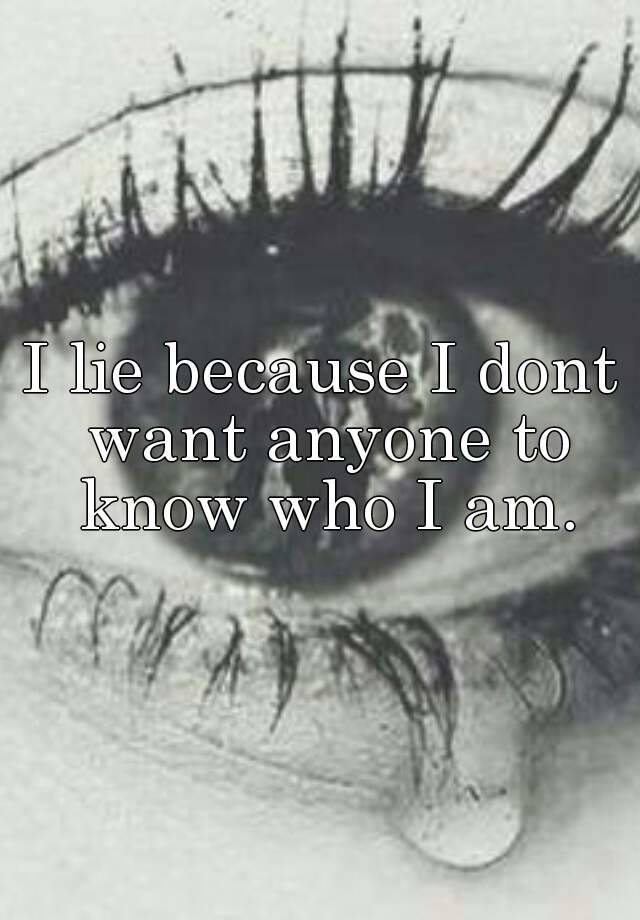 Start with 5 minutes at the end of the day if that’s all you have.
Start with 5 minutes at the end of the day if that’s all you have. - Make time for some physical activity – for example, walking, yoga or swimming. A bit of exercise can give you more energy for supporting your child.
- Seek help for yourself if you’re distressed, or you just want to talk about how your child’s behaviour is affecting you. Your GP, a psychologist or a counsellor is a good person to talk to about this.
Looking after yourself also gives your child an example of how it’s good to seek help when you’re distressed.
Harm | Crisis Text Line
Text A Crisis Counselor
Message A Crisis Counselor on WhatsApp
What is Self-Harm?
For some people, when depression and anxiety lead to a tornado of emotions, they turn to self-harm looking for a release. Self-harm and self-injury are any forms of hurting oneself on purpose. Usually, when people self-harm, they do not do so as a suicide attempt.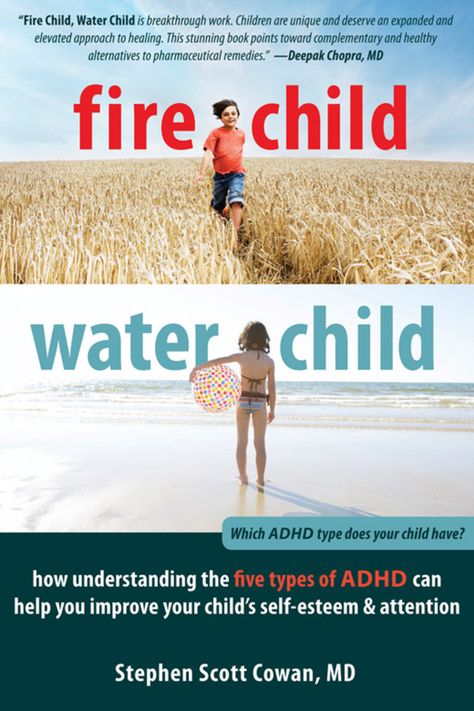 Rather, they self-harm as a way to release painful emotions.
Rather, they self-harm as a way to release painful emotions.
Types of Self-Harm
Self-harm can manifest differently for everyone. And, the ways people may self-harm extend far beyond the usual references to cutting in media. Simply, self-harm is anything and everything someone can do to purposely hurt their body.
Here are some of the most common types of self-injury:
- Cutting
- Scratching
- Burning
- Carving words or symbols into the skin
- Hitting or punching oneself (including banging one’s head or other body parts against another surface)
- Piercing the skin with sharp objects such as hairpins
- Pulling out hair
- Picking at existing wounds
Symptoms of Self-Harm
Stigma creates shame and embarrassment, making it hard for people who self-harm to get help. So, look out for yourself and for your pals. If you suspect that someone in your life is self-harming, here are some warning signs to keep top of mind:
- Scars
- Fresh cuts, burns, scratches, or bruises
- Rubbing an area excessively to create a burn
- Having sharp objects on hand
- Wearing long sleeves or long pants, even in hot weather
- Difficulties with interpersonal relationships
- Persistent questions about personal identity
- Behavioral and emotional instability, impulsiveness, or unpredictability
- Saying that they feel helpless, hopeless, or worthless
Crisis Text Line can help you deal with self-harm.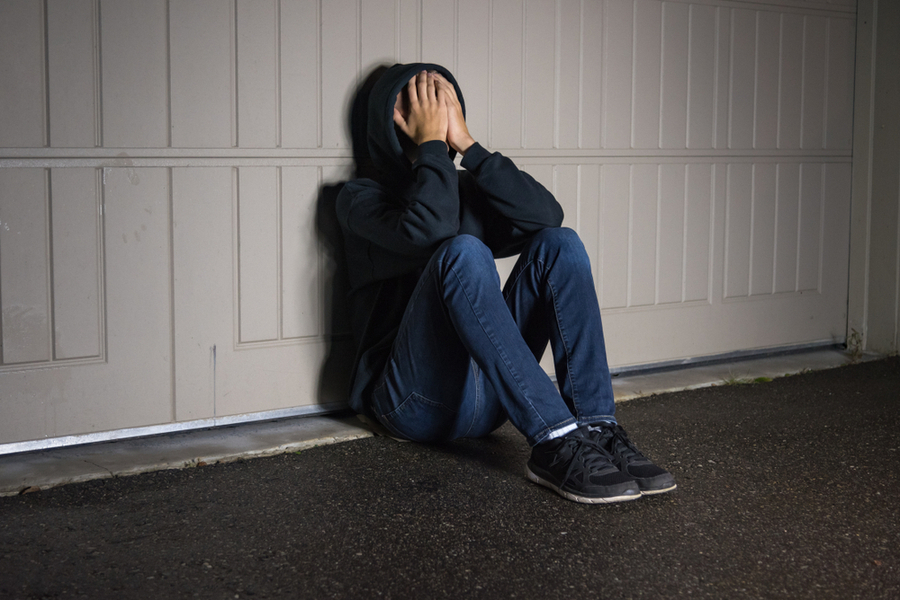 Text a Crisis Counselor at 741741, or use the mobile text button below.
Text a Crisis Counselor at 741741, or use the mobile text button below.
How to Deal With Self-Harm
Emotions can be really painful sometimes. It’s totally normal to need ways to cope with and process the hard things in your life. If you are using self-harm to manage your emotions, we’re here for you. And, we want to help keep you safe.
Here are some ways to push through, process, and cope with your emotions.
- Text to cool down. If you’re dealing with painful emotions, we’re here to help. Shoot us a text to connect with a real human and strategize healthy coping mechanisms to manage your emotions. Text HOME to 741741 to connect with a real human.
- Get creative. Studies show that diving into making art can help people process emotions. So, next time you’re feeling like self-harming, grab your sharpie and doodle your worries away. A bonus: you can totally suck at it and still reap the same rewards.
- Find your zen.
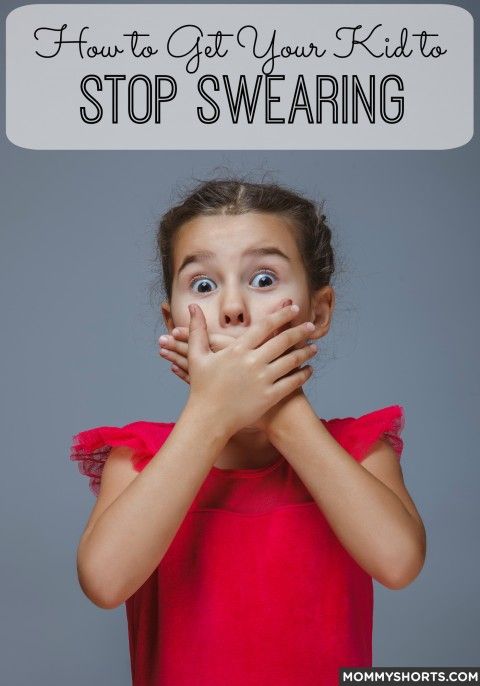 Keeping yourself safe from self-harming is all about finding healthy alternatives to work through the hard stuff. Researchers found taking time to re-center through meditation to be a powerful way to find your cool and calm. Try using an app like Headspace to get on the meditation bandwagon.
Keeping yourself safe from self-harming is all about finding healthy alternatives to work through the hard stuff. Researchers found taking time to re-center through meditation to be a powerful way to find your cool and calm. Try using an app like Headspace to get on the meditation bandwagon. - Talk to a pro. Self-harm is serious. And, while the intention behind self-harm usually is not death, it can still be dangerous—both physically and emotionally. Talking to someone who can help you find alternatives is incredibly important. Of course, you can start by texting us. Also, consider telling someone you know who can help you connect with a professional.
Why Do People Self-Harm?
Let’s start with this: everyone needs a way to cope with their emotions. People who self-harm have turned to hurting themselves as their coping mechanism to manage their emotions.
So, people might self-harm to:
- Process their negative feelings
- Distract themselves from their negative feelings
- Feel something physical, particularly if they are feeling numb
- Develop a sense of control over their lives
- Punish themselves for things they think they’ve done wrong
- Express emotions that they are otherwise embarrassed to show
Effects of Self-Harm
Self-harm can be seriously dangerous—physically, emotionally, socially, all of it.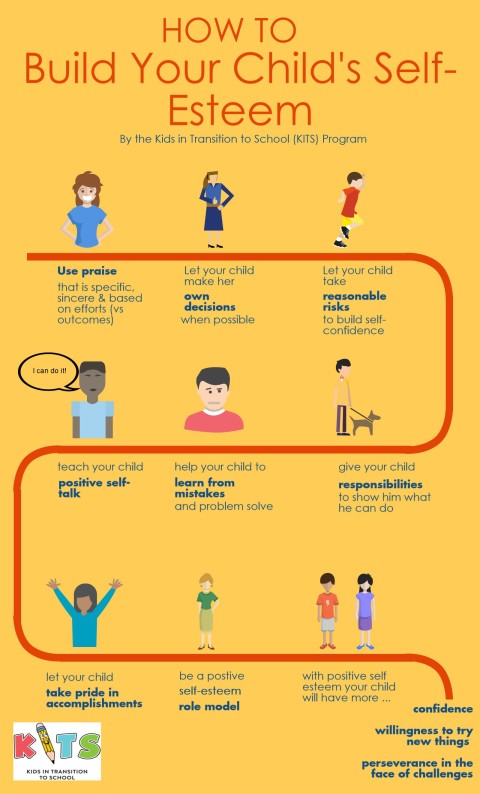
Physical Effects of Self-Harm
- Permanent scars
- Uncontrolled bleeding
- Infection
- Emotional Effects of Self-Harm
- Guilt or shame
- A diminished sense of self, including feeling helpless or worthless
- Addiction to the behavior
Social Effects of Self-Harm
- Avoiding friends and loved ones
- Becoming ostracized from loved ones who may not understand
- Interpersonal difficulty from lying to others about injuries
Recovering from Self-Harm
A lot of people who self-harm do so because they are dealing with painful emotions. If this applies to you, hi—we believe in you and recognize your pain. Because painful emotions are at the root of self-harm, quite often recovering from self-harm involves addressing emotions.
Breaking away from the cycle of self-harm can feel like a huge climb. It involves breaking a habit that has once brought comfort from pain.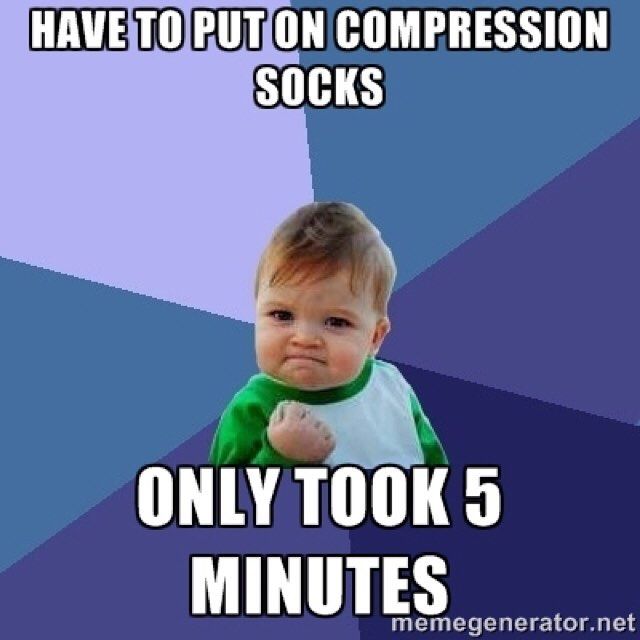 But, it is not impossible. Here are some steps to set you up for success:
But, it is not impossible. Here are some steps to set you up for success:
- Name your reason for hurting yourself and your reason for quitting. Ask yourself: “What do I feel before, during, and after self-injury? Which of those emotions do I actively seek out, and which are harmful?”
- Identify other ways of achieving the same result. For example, if you self-harm for the physical sensation, seek other ways of releasing endorphins, like exercise. For real, try throwing a few punches at a kickboxing class or tapping it back in a spin class with the *perfect* playlist. If you self-harm to express your emotions, practice expressing them in words by writing them down. Grab a pen and your favorite notebook, or start typing away in your notes app.
- Tackle the underlying emotions. Explore the feelings that lead you to want to hurt yourself. If it’s guilt, where is that guilt coming from? Maybe try finding a therapist—there are pros trained specifically to help with this.

- Tell someone you trust. Let a friend, family member, or trusted adult know what you’re going through and that you need their support. Opening up to people can be easier said than done. Here’s a place to start: “I’m having a hard time processing some painful emotions and I could use your support right now.”
Getting healthy—both in your brain and in your body—takes hard work. You got this. And, we believe in you.
Text a Crisis Counselor at 741471 or use the mobile click to text button below. You’re not alone.
Pass 741741 On To A Friend
You never know who might need Crisis Text Line. Pass it on and tell the people in your life to text HOME to 741741 if they’re ever in crisis.
The child cuts himself. 7 essential things to know about self-harm
About 18-30% of all teenagers have tried self-harm at least once in their lives. Most often, self-harm begins in the period of 12-15 years and is associated with psychological problems.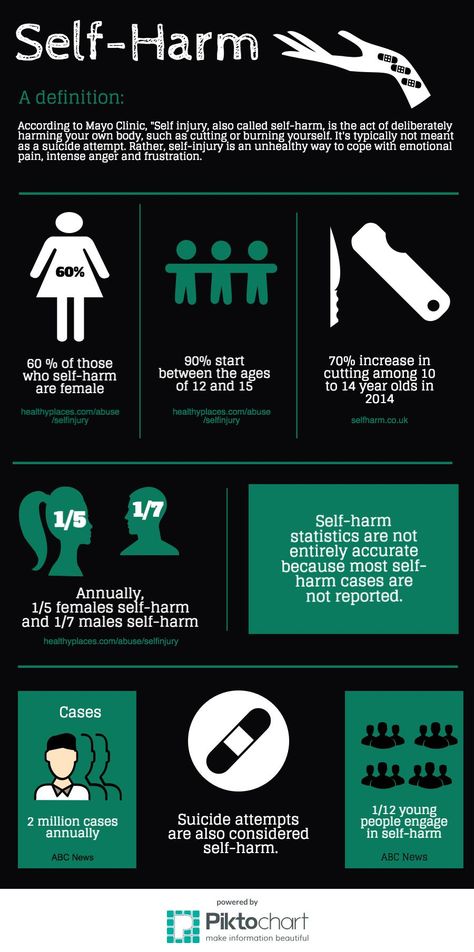 Nastasya Krysko, an adolescent psychologist, cognitive behavioral therapist, host of a telegram channel about self-kindness, told the main thing you need to know about self-harm in a child.
Nastasya Krysko, an adolescent psychologist, cognitive behavioral therapist, host of a telegram channel about self-kindness, told the main thing you need to know about self-harm in a child.
Self-injurious behavior, or self-harm, is self-harm in order to cope with difficult experiences, painful memories, situations, and the inability to control one's life. This could include cuts, burns, and blows. Self-harmful behavior is resorted to by people from 8 years old to old age, most often self-harm occurs in adolescents.
Self-injurious behavior always has some function, most often it is a way of emotional self-regulation. For example, some teenagers describe self-harm as a way to express what is difficult to put into words; make emotional pain physical; get rid of unbearable experiences and thoughts; regain a sense of control; escape from traumatic memories; punish yourself - for terrible behavior, feelings or thoughts; stop feeling numb; express suicidal thoughts and intentions without committing them, etc.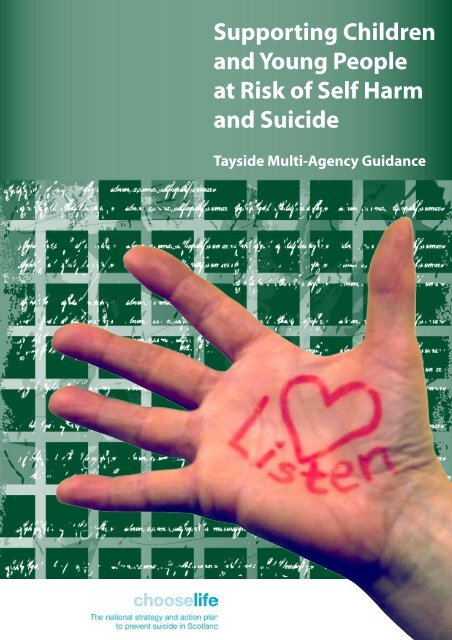
It is important to understand that self-harm works in a vicious circle: some situation (trigger) occurs - a negative thought arises in it, which causes negative emotions, - emotions build up - the idea of \u200b\u200bself-harm invades - self-harm occurs, which gives temporary relief. But since the problem itself has not been resolved, thoughts that negatively affect a person remain, the person falls into the “self-harm trap”.
Unhelpful phrases
It's normal not to know what to say when you see a child's cuts. Most often, we utter unhelpful phrases out of impotence or anxiety and do not put anything bad into them, but it is important to remember that these words can be perceived in a completely different way by a teenager.
- It's all in your head.
- Don't make problems out of nothing.
- Get a grip.
- They still manage somehow, and you, too, come on.
- Just look at things more optimistically.
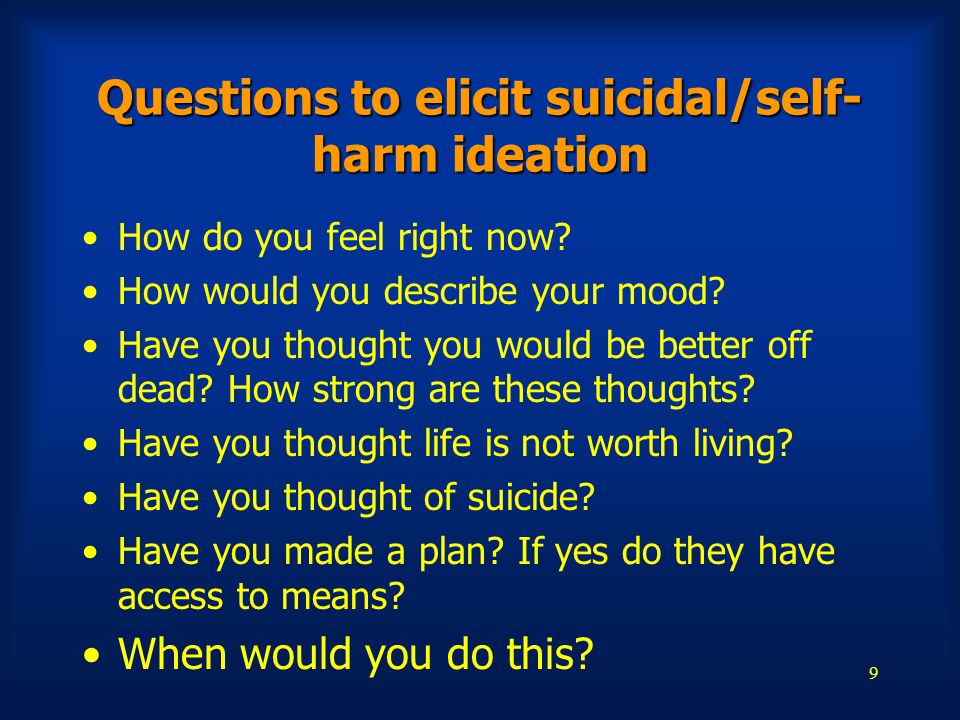
- There are so many other things in your life, and you are all about one thing.
- Stop pretending to be crazy.
- What's the matter with you?
- You should have felt better a long time ago.
- It's a teenage crisis - get over it.
For example, a teenager got an F and he had thoughts "I'm stupid, I'm good for nothing, my parents are disappointed in me." These thoughts influence the increase in the intensity of emotions - sadness, anxiety, anger, despair. At some point, a teenager thinks: “I can’t stand this, I need to cut myself,” and cuts himself. This gives temporary relief, but since the thoughts themselves remained and there was no other way to cope with strong negative emotions, then most likely the teenager will often cut himself and fall into the selfharm trap.
In order to reduce a teenager's chances of hurting himself in any way, it is important to do some work: understand the mechanism of self-harm and train other safe skills to deal with strong emotions and solve problems.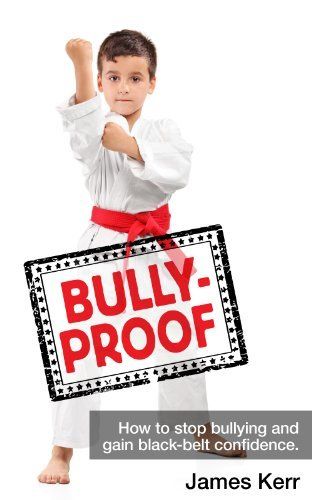 Developing a safety plan can help support your teen in avoiding self-harming behavior. This plan may include the following items:
Developing a safety plan can help support your teen in avoiding self-harming behavior. This plan may include the following items:
- Signals that a crisis is approaching (situations, thoughts, sensations, images)
- Ways, techniques, practices to distract yourself
- People who can distract (list of contacts: friends, relatives, whom you can call and talk to, go for a walk)
- People you can ask for support (list of contacts)
- Places where you can find support (where you can go for a walk to help yourself gain strength, switch, it should be some kind of resourceful and safe place)
- Professionals and organizations to contact during a crisis (contacts of professionals who work with your teenager)
- Emergency (emergency contacts: helplines, crisis chats, ambulance)
- Prevention: how can I make my environment safer
There is a myth that teenagers use selfharm to manipulate and get attention. Because of this myth, those who injure themselves in some way feel judged, rejected, and not taken seriously, leaving them alone with their suffering. If your teenager uses self-pharmaceutical, do not yell at him, do not criticize, do not ignore, but offer to discuss what is happening to him, and offer to contact specialists.
Because of this myth, those who injure themselves in some way feel judged, rejected, and not taken seriously, leaving them alone with their suffering. If your teenager uses self-pharmaceutical, do not yell at him, do not criticize, do not ignore, but offer to discuss what is happening to him, and offer to contact specialists.
Useful phrases
Supportive phrases are most often aimed at conveying that a person is not alone, they are not judged and are ready to help:
- You are not alone.
- I am by your side.
- You are not bad.
- I may not fully understand how you feel, but I'm worried about you and want to help.
- You mean a lot to me, and I care about your life.
- It seems that you have strong feelings and difficulties along the way.
- I am always ready to support and help you.
- I would like to understand more about you and your condition.
- If you want, I can give advice.
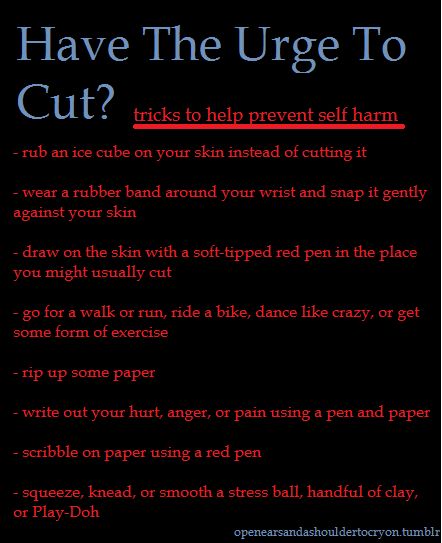
- I believe that we will deal with these difficulties together.
Take care of yourself, find support, formulate what you would like to say to your child. Try not to panic or overreact. How you behave can affect how open he or she is with you. Here are a few things to keep in mind:
- Try not to be judgmental.
- Let me know you're around.
- Remember that a person is much more than his problem.
- Try to show empathy and understanding of the reasons for these actions.
- Offer help and support.
- Remind the teenager of his strengths and the things he is good at.
- Offer to put together an algorithm of what is important to do when thoughts of selfharm arise.
- Do not discuss more than one topic with your teenager in this conversation. If you suggested discussing self-harm, then in this dialogue it is important not to switch to other problems like cleaning, studying, and so on.

- As a parent, get information and support from experts. You can read a brochure on self-harming behavior, for example here.
- Will not help in dialogue with a teenager who uses self-harm, but will only increase his aloofness and closeness: criticism, accusation, shame, devaluation, ignoring damages or, conversely, too much focus on them, the use of violence.
Supporting a child using self-harm can be a difficult and long journey, with ups and downs. Parental self-care becomes an important skill that we will build upon with the support of the adolescent:
- Remind yourself that change is not linear and takes time.
- Find out what types of help and support are available.
- Request and receive support and information for yourself.
- You can also contact specialists for support.
Self-injurious behavior requires supportive work aimed at strengthening the skills of awareness, stress resistance, emotional self-regulation, self-care, effective communication. At the moment, dialectical-behavioral therapy has a high proven effectiveness in chronic suicidal and self-damaging behavior, including in adolescents.
At the moment, dialectical-behavioral therapy has a high proven effectiveness in chronic suicidal and self-damaging behavior, including in adolescents.
On April 14–16, Nastasya Krysko took part in the International Scientific and Practical Conference "Teenager in the Megapolis: Inequality and Opportunities", where psychologists and teachers discussed the main problems of modern high school students: from physicality and psychophysiology to digital socialization and gadgets.
Illustrations: Kira Illarionova for Mel
Illustration: Kira Illarionova
Self-harm: what it is and how to help a child
Photo: Unsplash (Brian Patrick Tagalog)Teenagers sometimes start behaving destructively. Self-harm is something that has been openly talked about as a problem not so long ago. Our bloggers from the "Choose Life" project of the "Road Home" charity foundation tell how parents should behave if their child cuts or burns himself.
Self-cutting, hair-pulling, self-burning, nail-biting bleeding are all forms of self-injurious behavior. By and large, tattoos, piercings are also self-harm, but socially acceptable.
By and large, tattoos, piercings are also self-harm, but socially acceptable.
Most often, girls aged 13–16 years old, boys aged 12–18 years old resort to cuts in difficult situations. Children of primary school age also injure themselves: they hit themselves on the head with their fists, bite their nails until they bleed, they can beat their heads against the wall.
It is believed that self-cutting is a light version of suicide. In fact, this is not so. In suicide, there is only one motive - depriving oneself of life. Self-injurious behavior, which includes cutting, has completely different motives, causes:
- Desire to belong to a group (tattoos, for example: bikers have their own tattoos). They can reflect the status, position of a young person in a group. For a teenager, the problem of separation is relevant - separation from parents. He needs to somehow stand out in his reference group. If someone cuts himself in it, he will also do it, just to demonstrate belonging to the team: "Look, I'm doing like you.
 " If a teenager's parents violate his personal boundaries, tightly control his life, then cuts can be a protest reaction: "At least with my body I can do what I want."
" If a teenager's parents violate his personal boundaries, tightly control his life, then cuts can be a protest reaction: "At least with my body I can do what I want." - The subconscious desire of the child to check whether he is alive at all (in the moral sense), whether he can experience emotions. This situation can develop after psychological trauma, whether it is family violence, a conflict situation with friends, or bullying in an educational institution. What is the reaction of a person who has received a psychological trauma? There is a kind of emotional freeze, as if a shield is placed on emotions. The child - again due to ignorance and lack of experience - does not understand what is happening to him. He gets the feeling “I don’t live. I don't feel anything." What happens next? As an option, he cut himself, and did it in order to feel that he was alive.
- The desire to reduce excessive tension in a stressful situation.
- Physical expression of emotional pain, translation from an emotional level to a bodily one.

- In addition, self-cutting can be seen as self-care. This is the so-called Munchausen syndrome (simulation, exaggeration). A teenager draws attention to himself in order to be taken care of, seeks to receive support. And it does not matter that this concern will be in a negative way. For a child, indifference is worst of all, so even conflicts, corporal punishment are better for him: it is still communication, bodily contact, albeit such an inverted one.
- Adolescents can punish themselves by self-cutting, thus showing a negative attitude towards their body.
- Attempt to regain control over own body. A teenager has an illusion of control over his body and life (especially when he is in a hyper-control situation or severe dependence on his parents).
An important role in the formation of self-damaging behavior, including self-cutting, is played by a feeling of anger that arises in childhood in response to aggression and physical abuse, which, under conditions of chronicity, accumulates, is forced out and crystallizes in the unconscious, manifesting itself in the desire to destroy that part of oneself that was "guilty of helplessness". Often this is reflected in adolescents who are systematically subjected to beatings, harassment and / or violence. Self-infliction of pain is a substitute for anger towards the rapist and / or aggressor (this is especially true in situations of cultural prohibition on expressing emotions towards the offender).
Often this is reflected in adolescents who are systematically subjected to beatings, harassment and / or violence. Self-infliction of pain is a substitute for anger towards the rapist and / or aggressor (this is especially true in situations of cultural prohibition on expressing emotions towards the offender).
When a mother or father commits violence, there is a strong dissociation. On the one hand, I love, this is mine, close, and on the other hand, this is the aggressor. It turns out a double object-representation of parents in the mind of the child. All this breaks the psyche very much, causes the diffusion of identity and leads to self-damaging behavior.
Be careful!
Any teenager is worst of all when they are indifferent to him. Attention is needed - any, even negative. Through self-harm, the child solves psychological problems that he cannot solve in any other way. If an adolescent is deprived of this without providing a constructive alternative, he may choose even more destructive behaviors. That is, a cut is a kind of beacon signaling that something is wrong in the state of mind of a teenager. This sign parents need to interpret correctly.
That is, a cut is a kind of beacon signaling that something is wrong in the state of mind of a teenager. This sign parents need to interpret correctly.
Attempts to scold, intimidate a teenager with the consequences of such behavior, appeal to feelings of guilt, shame, conscience not only do not help, but usually aggravate the situation
For example, a child uses self-cutting as an accessible way to cope with feelings of anger, anxiety, guilt. The parent, having discovered this, begins to accuse: “Can you imagine how I feel!”, “The whole family is suffering because of you!”, Intimidates: “You will have scars! It's not pretty! You will bring an infection!" This again gives rise to feelings of anxiety and guilt, again the teenager needs a way to cope with them, the need for habitual helping actions appears again. It becomes like a vicious circle.
What should I do if I find cuts on my child's body?
- Don't panic or make a fuss.
- Do not intimidate.

- Make an attempt to speak. Say: “I feel that you feel bad, it happens. We all go through tough times from time to time.”
- Start showing interest in the child's life. The main thing is not to go too far and not to bother with questions about and without.
- Reconsider your attitude to education. Try to figure out what exactly you did wrong. It is necessary not just to do something (action for the sake of action), but to completely change the style of education.
- Analyze relationships in the family, how open they are.
Any attempts to limit and deprive an adolescent of helping activities usually do not bring any results unless he has a different, new way to cope with emotional stress or resolve psychological conflict. It is useful to understand that at the moment this is not the best, but the most affordable way for a child to temporarily make intolerable experiences bearable or get something for himself that cannot be provided in another way.

